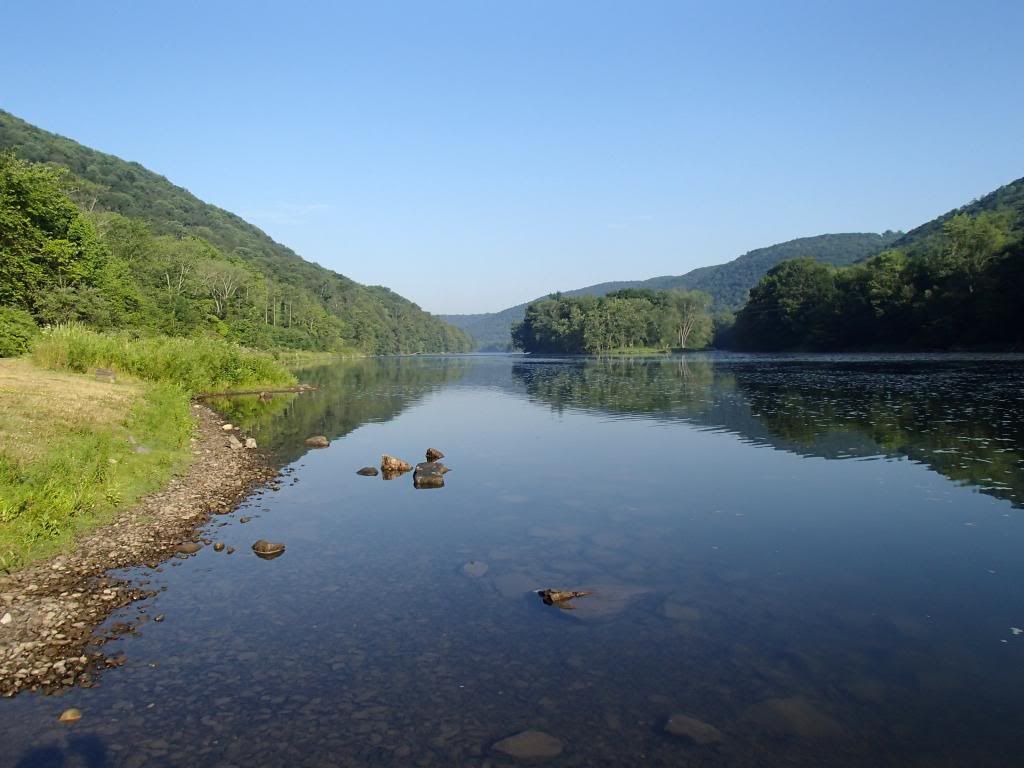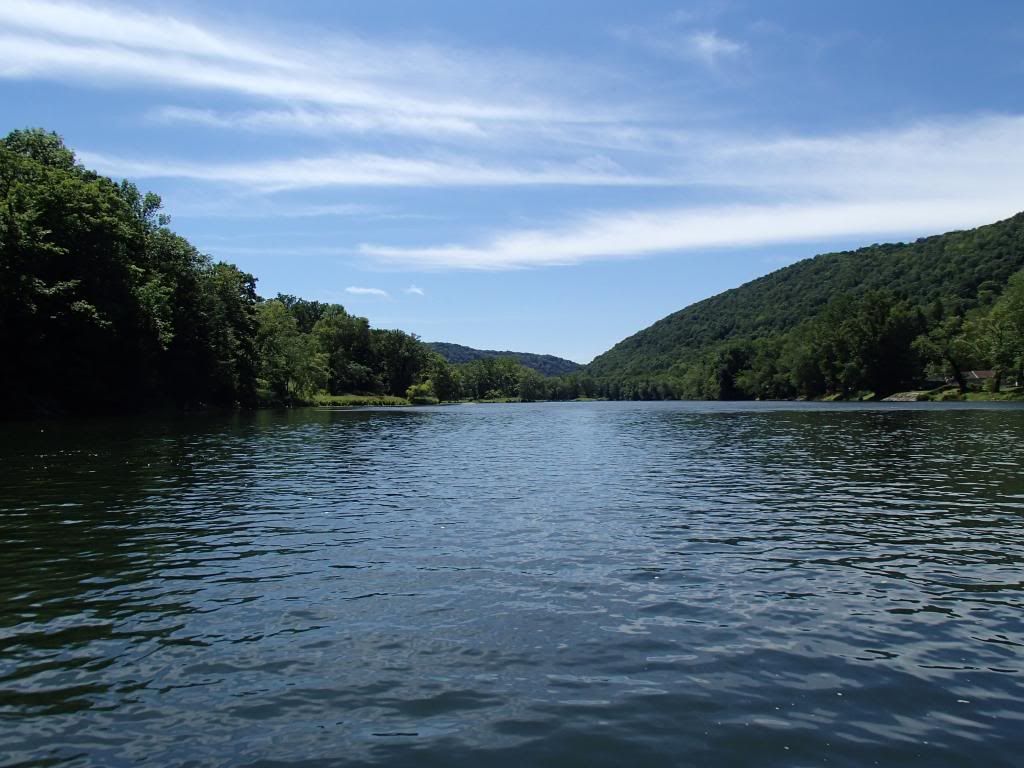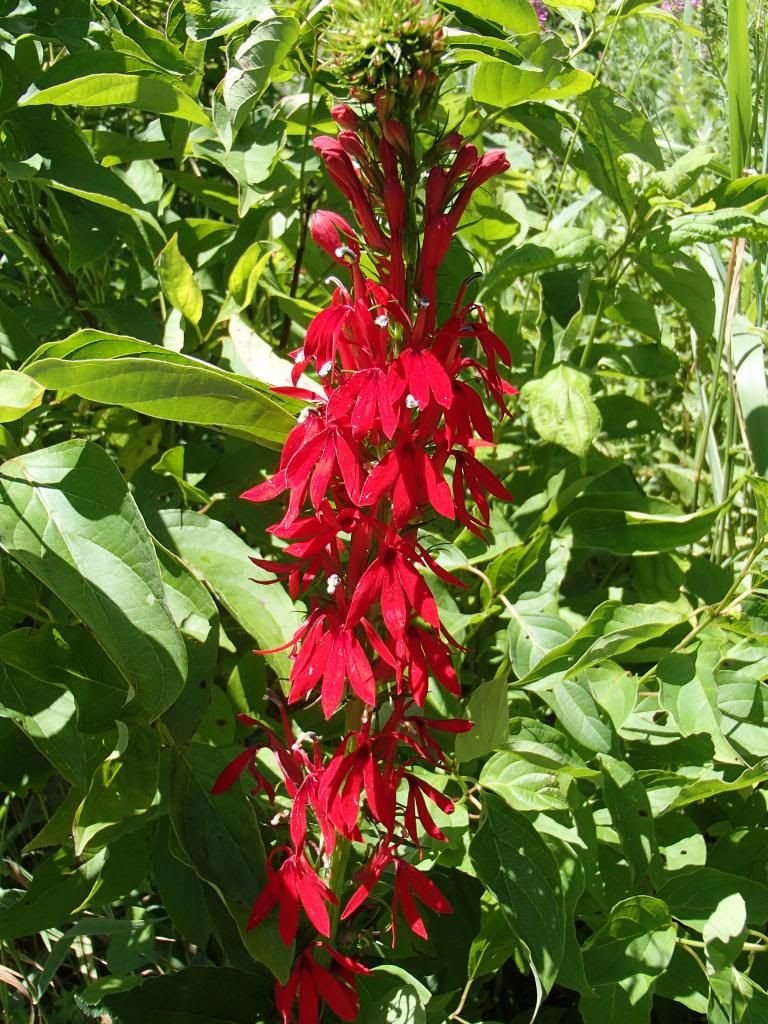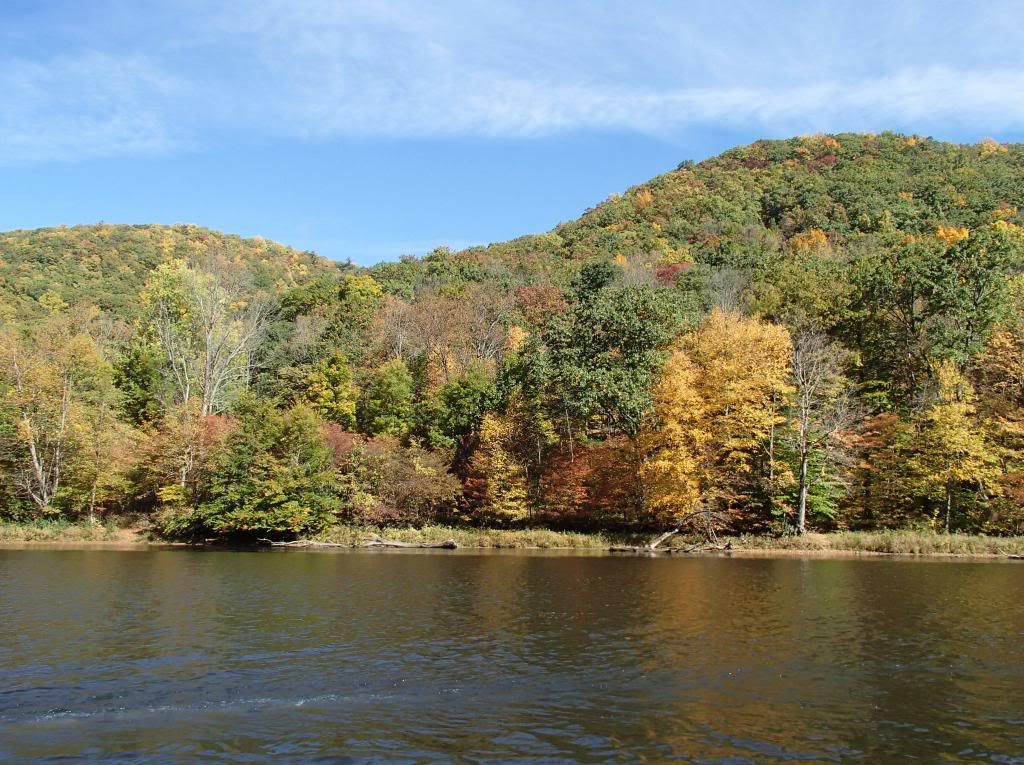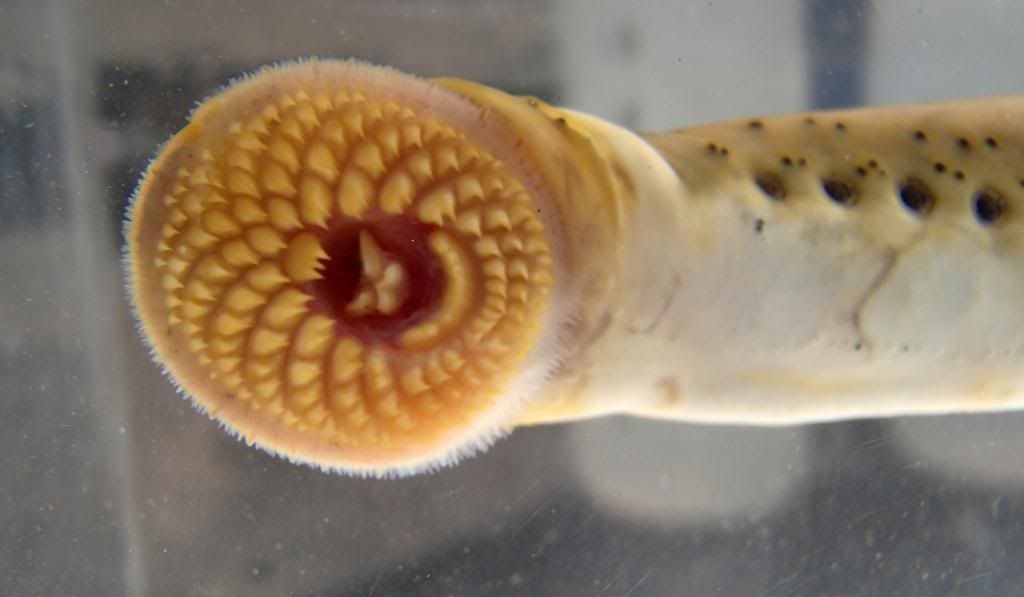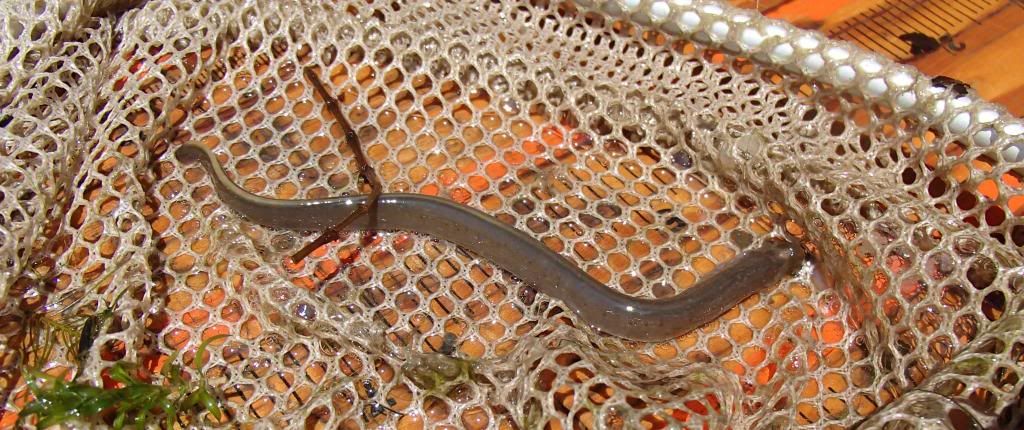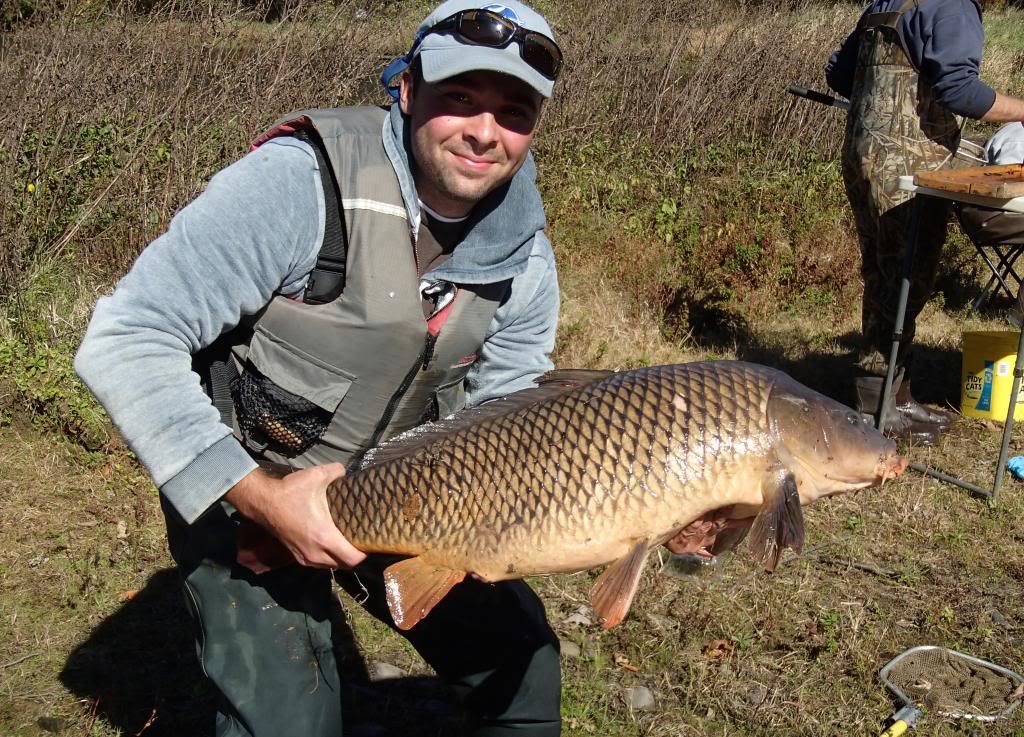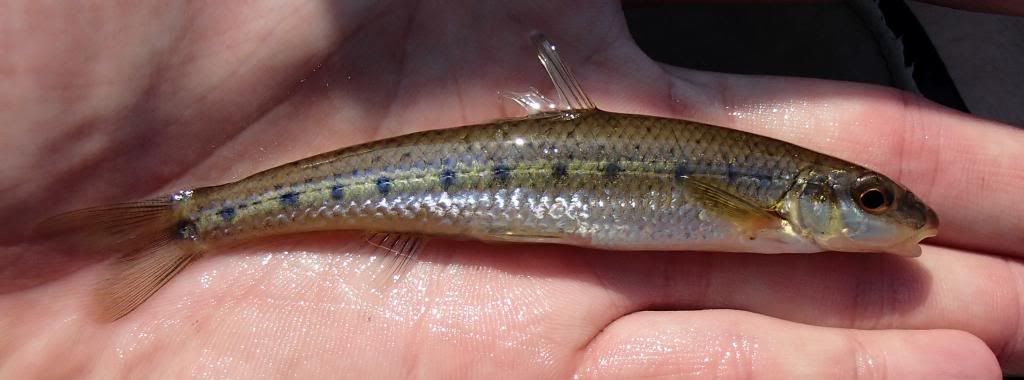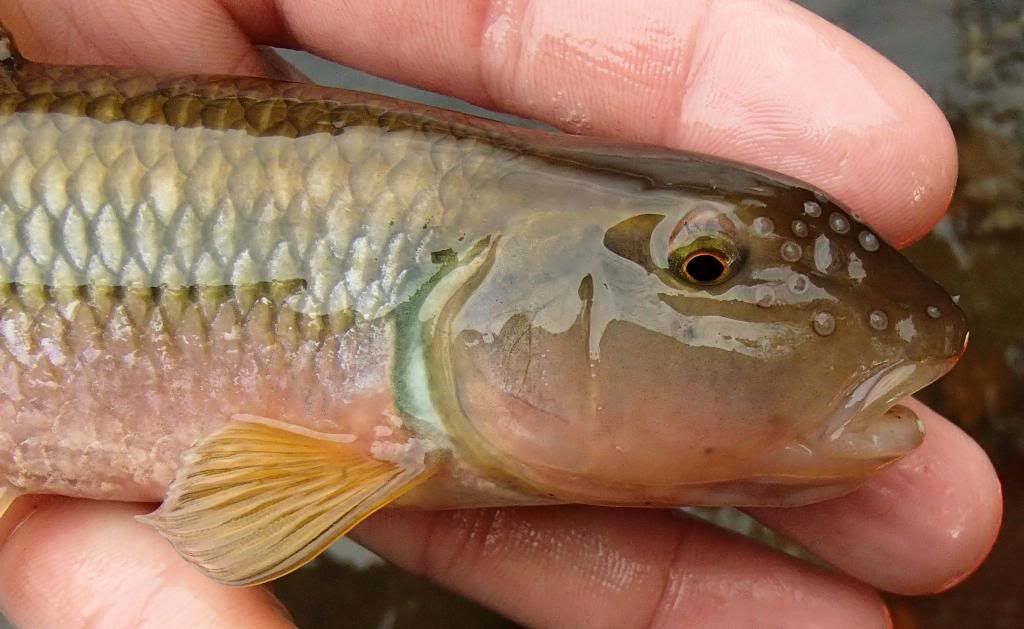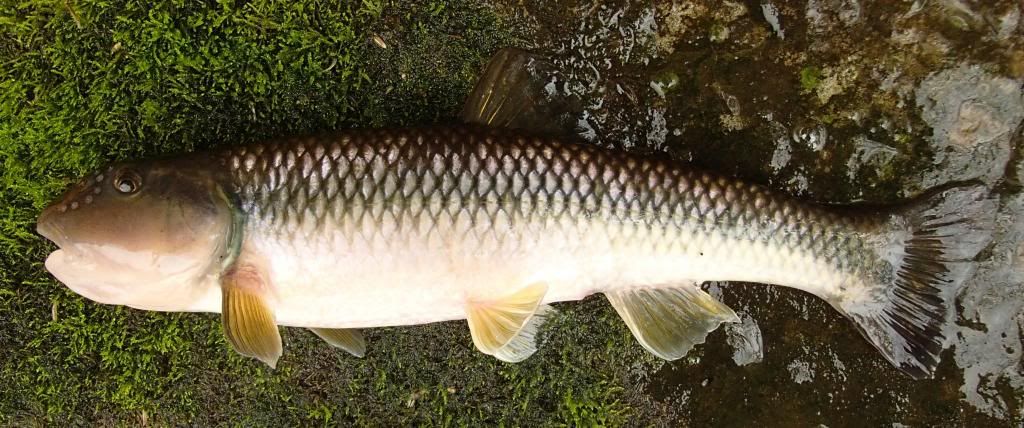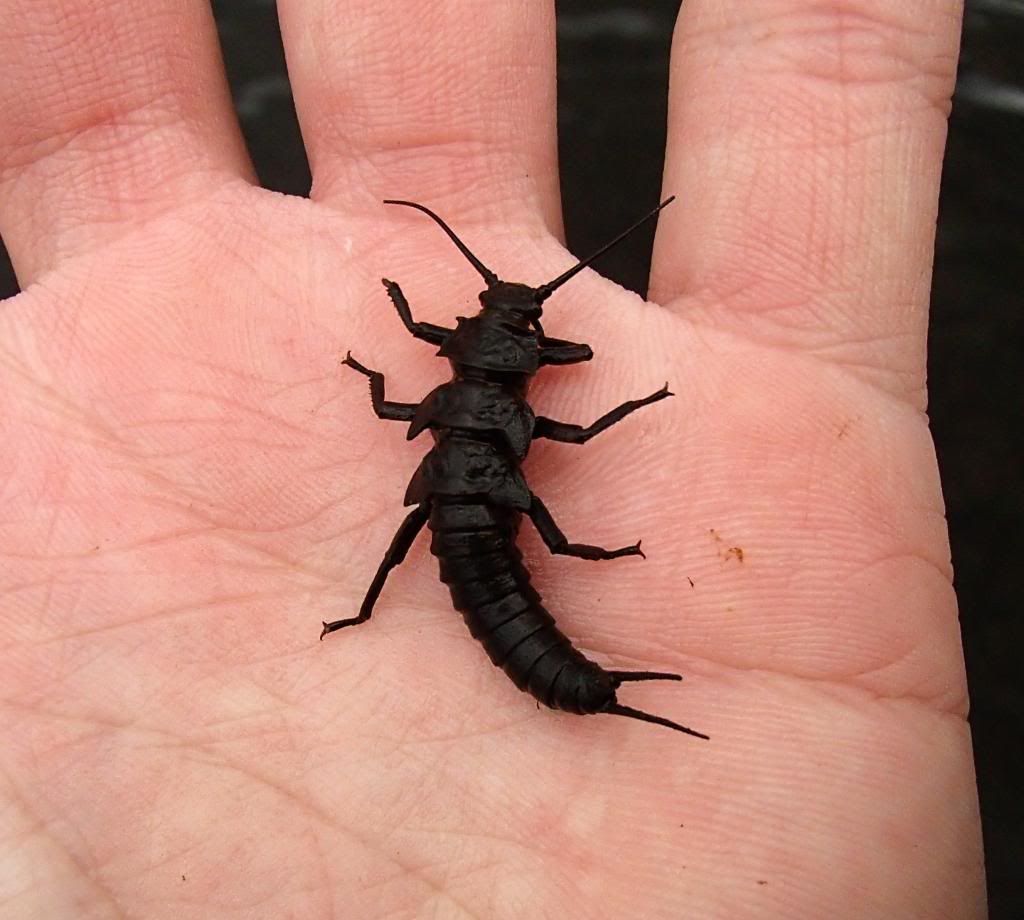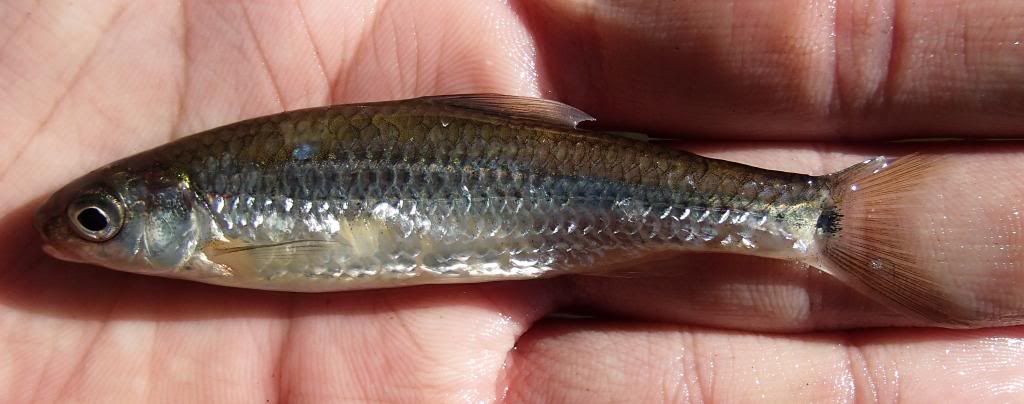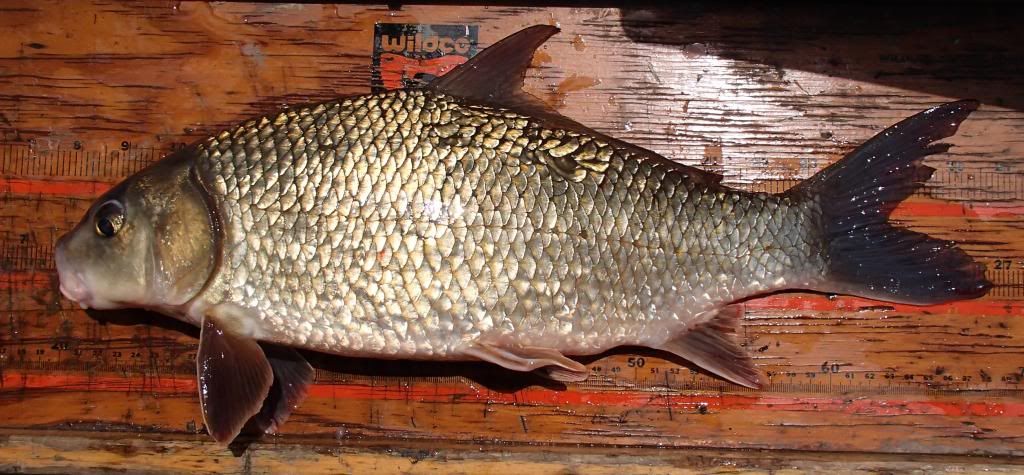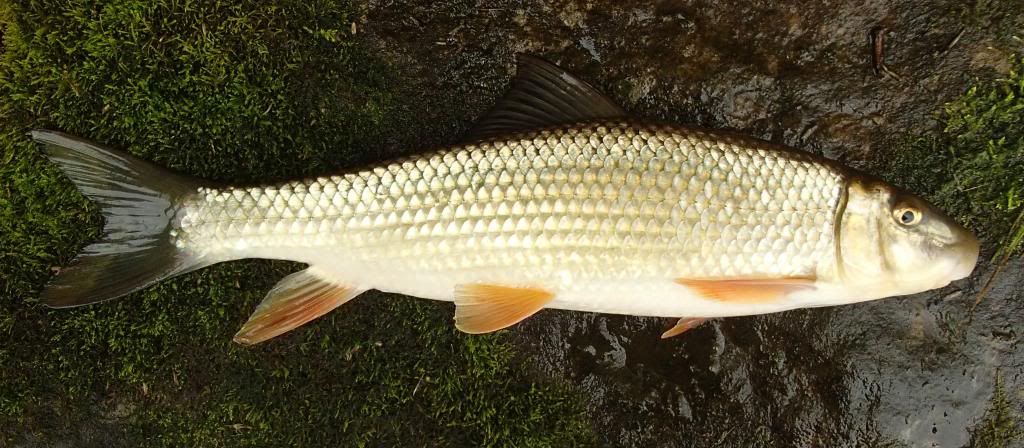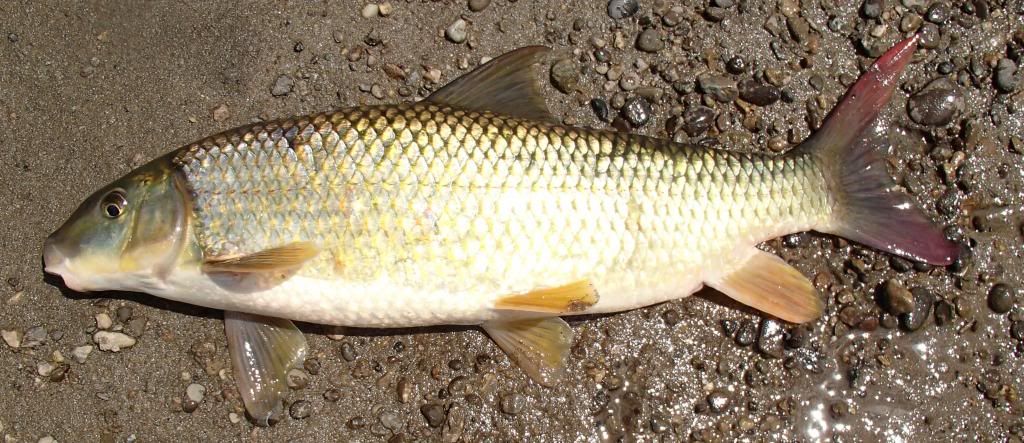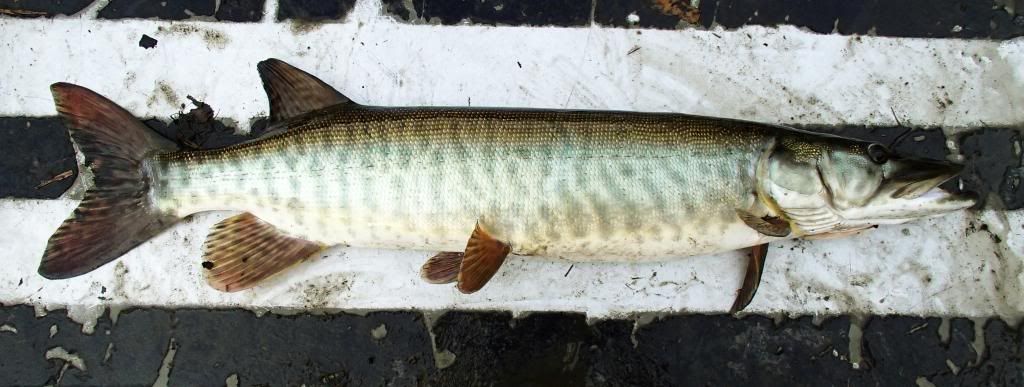Continueing the species list...
Rainbow trout (
Oncorhynchus mykiss) - this section of water is managed as Trophy Trout Water by the Commonwealth of Pennsylvania. Rainbow and brown trout are stocked in the spring.
Brown trout (
Salmo trutta) - small trout were abundant after the spring stocking, however, only a few large adults were captured in fall. The largest of the trout was a little over 24".
Brook silverside (
Labidesthes sicculus) - only a few were collected. Whenever I find these during electrofishing, only a handful show up during sampling. I think this is an issue of gear avoidance, as I typically catch these in greater numbers when seining.
Mottled sculpin (
Cottus bairdii) - very common.
White bass (
Morone chrysops) - only one found throughout the survey area.
Rock bass (
Ambloplites rupestris)
Pumpkinseed sunfish (
Lepomis gibbosus)
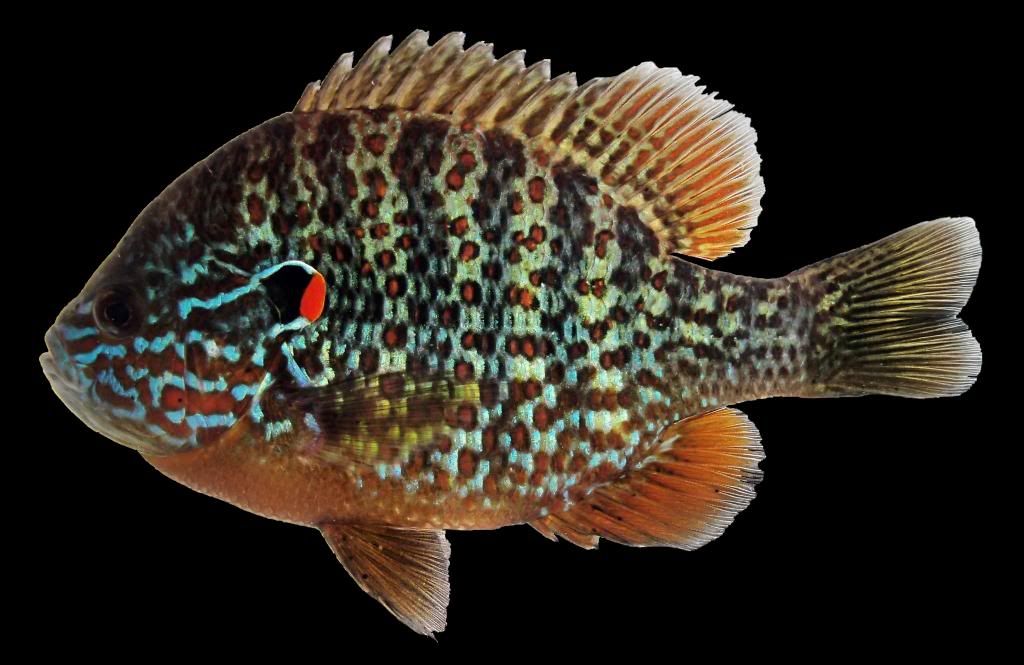
- only found a few, but the ones I did see were large adults.
Bluegill sunfish (
Lepomis macrochirus)
Smallmouth bass (
Micropterus dolomieu) - this section of river provided lots of nursery area for smallmouth bass. In some 500m stretches, I would see hundreds of young-of-year fish near the shoreline. All of the deeper holes contained adult bass, including several in the 4 lbs. range.
Largemouth bass (
Micropterus salmoides) - caught one largemouth bass per every 200 smallmouth bass. The high gradient rocky habiat favored smallmouth bass.
Greenside darter (
Etheostoma blennioides)
Rainbow darter (
Etheostoma caeruleum) - very common. These were not only found in the gravel riffles and runs, but they were found along the rocky shoreline of deeper pools with little current.
Fantail darter (
Etheostoma flabellare) - only a few.
Johnny darter (
Etheostoma nigrum) - surprisingly, only 5 were captured during both samping events. I'm used to seeing this species dominating the darter catch in the Midwest. Perhaps the high gradient of this stream and the competition from other darters (especially blackside, channel, and longhead darters) kept numbers of this species low.
Tippecanoe darter (
Etheostoma tippecanoe) - a few were found in some of the gravel runs. A few would show up in the samples, however, they're likely MUCH more abundant than our survey indicates. Those little guys are tough to see and tend to get stuck in rock crevices when stunned. A trib. to the Allegheny, French Creek, is known to have two other
Nothonotus darters (eg. bluebreast and spotted darter). So I was looking hard for those species but didn't find any (certainly doesn't mean they're not there).
Variegate darter (
Etheostoma variatum) - occurred sporadically throughout the sample, and were never the dominate darter.
Banded darter (
Etheostoma zonale) - one of the 7
Etheostoma sp. that could be found in the riffles and along the rocky shoreline of this portion of the river. Not bad.
 Yellow perch
Yellow perch (
Perca flavescens) - not many adults were captured. Young-of-year perch were abundant in the dense vegetation beds in a few of the slower pools.
Logperch (
Percina caprodes)
Channel darter (
Percina copelandi)
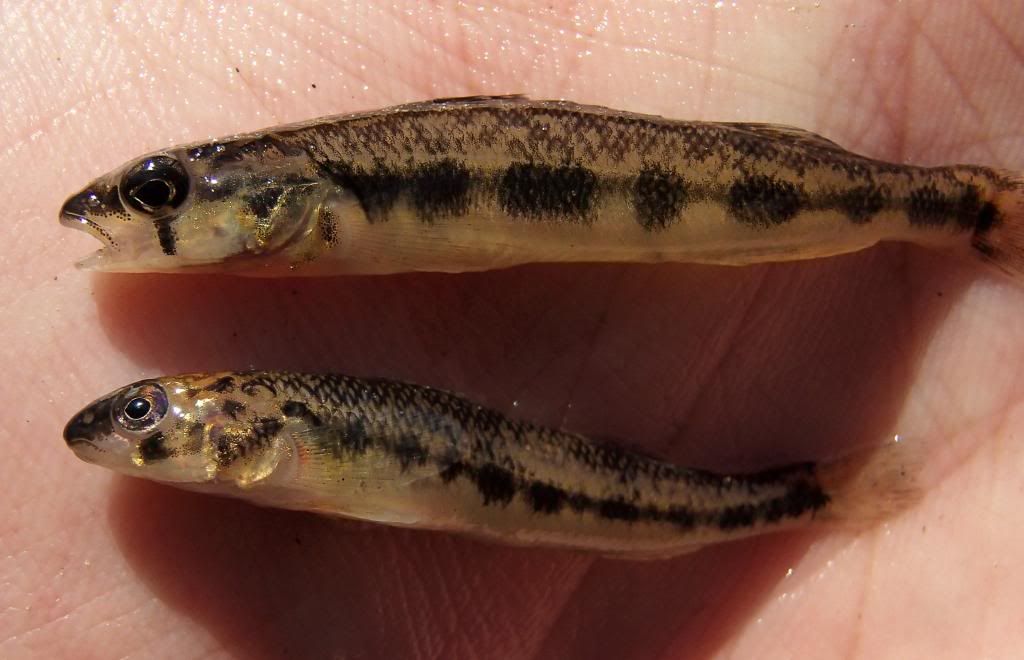
- very common along the rocky shorelines of the slower moving pools. These would be found alongside blackside and longhead darters. In some areas, we would catch ~100 of channel, blackside, and longhead darters. The picture above shows a blackside darter (top) and a channel darter (bottom). The two can look quite similar.
Gilt darter (
Percina evides) - only caught two in the survey area. It appears that they are being stocked in New York above the Allegheny Reservoir (but the fish collected here are likely residents of this portion of the river, and not fish that have washed downstream). Here's an article about the recovery efforts for this species in the Allegheny:
http://conservationf...es-gilt-darter/Longhead darter (
Percina macrocephala)
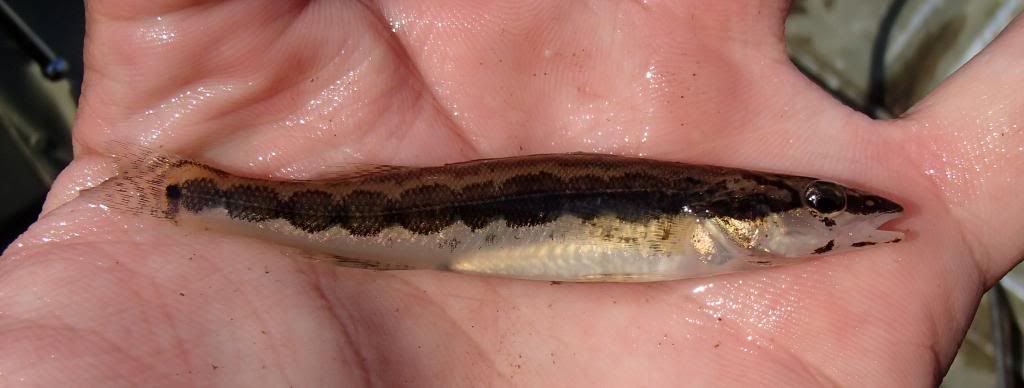

- this was my first time collecting this species. Man, they were abundant and large in this river! They were most often collected in slower moving water near the shoreline in deep pools. However, the largest ones were located near large boulders in swift runs. These have quickly become one of my favorite darters.
Blackside darter (
Percina maculata) - normally when I encounterd blackside darter, they're only present as a handful of individuals that are collected near a fallen tree or other cover. In this stretch of river, however, they were the most abundant darter. In a few pools with rocky shorelines, I netted so many that I got tired of seeing them.
Walleye (
Sander vitreus) - it seemed that every pool sampled had at least four or five adult walleyes. A few pools closest to the dam had fish in the 7-8 lbs. range.
Freshwater drum (
Aplodonitus grunniens)
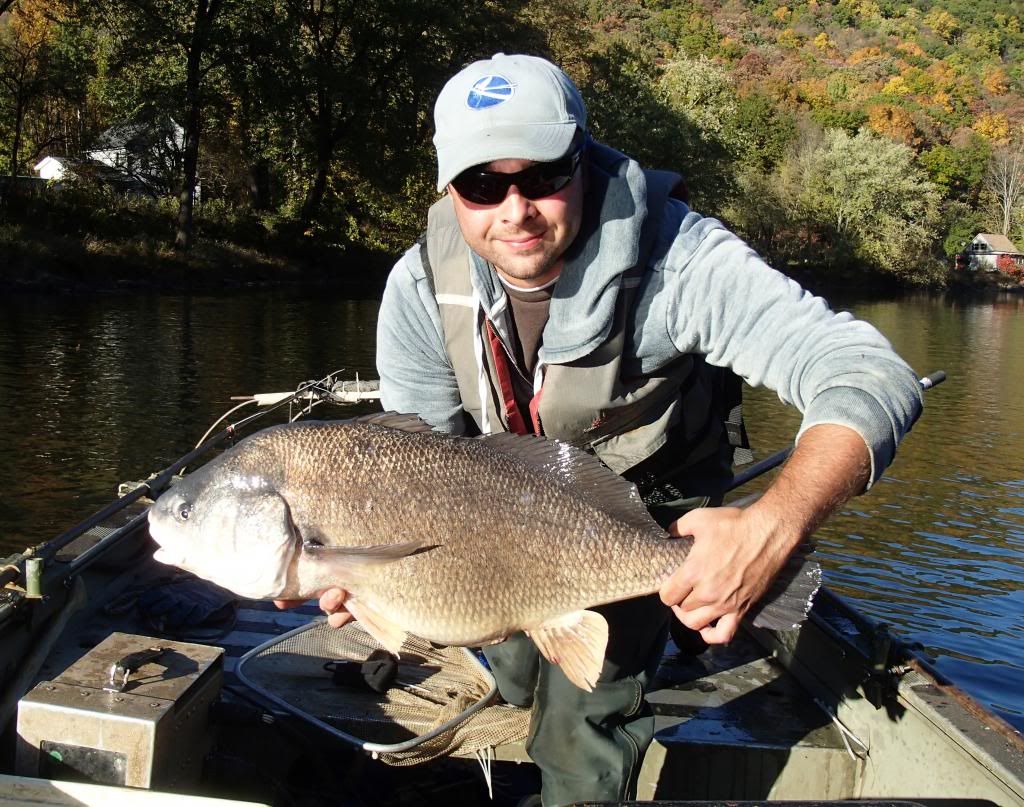
- every now and then one would show up in the deeper pools. Each one I nettted was over 15 lbs. in size! The one pictured weighed 17 lbs. (althoug it certainly doesn't look that big in the picture).
Well, that wraps up the species list for this survey in the upper Allegheny River in Pennsylvania. I'm headed back there for a few sampling events this spring, summer, and fall. I'll be sure to post and update afterwards. I hope this post may encourage some of you to visit the Allegheny to enjoy the scenery and the diverse fish fauna.
-Nate
